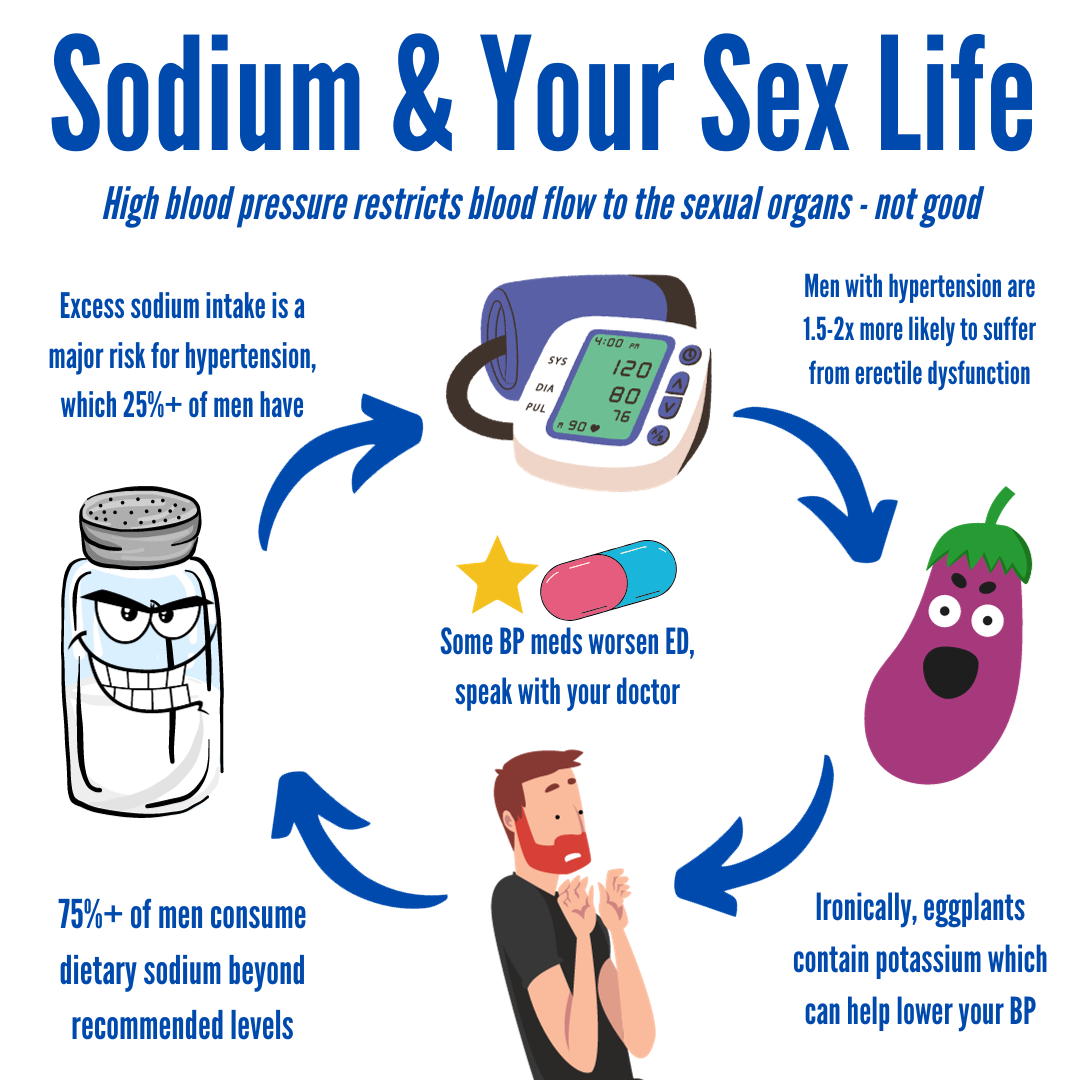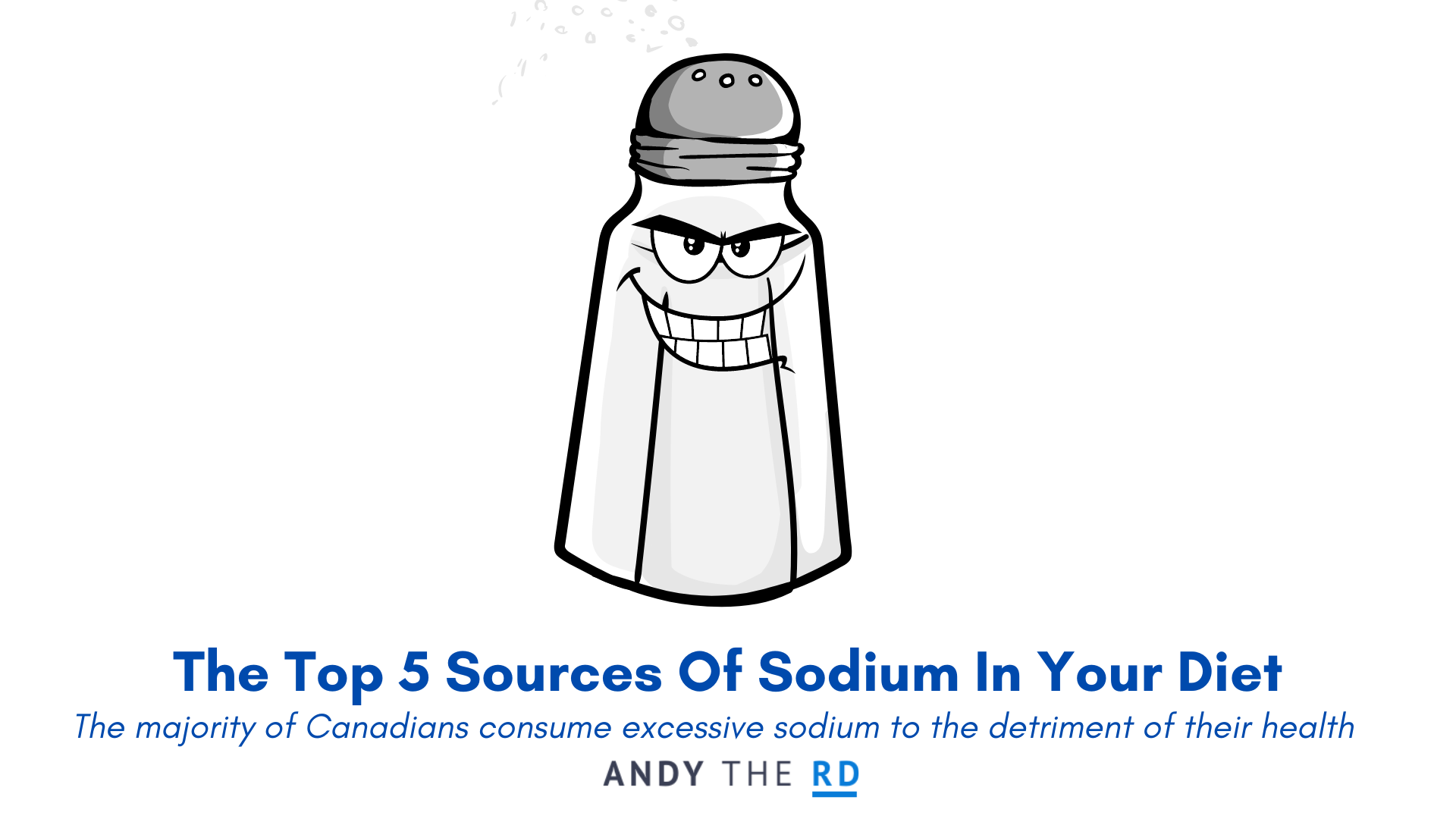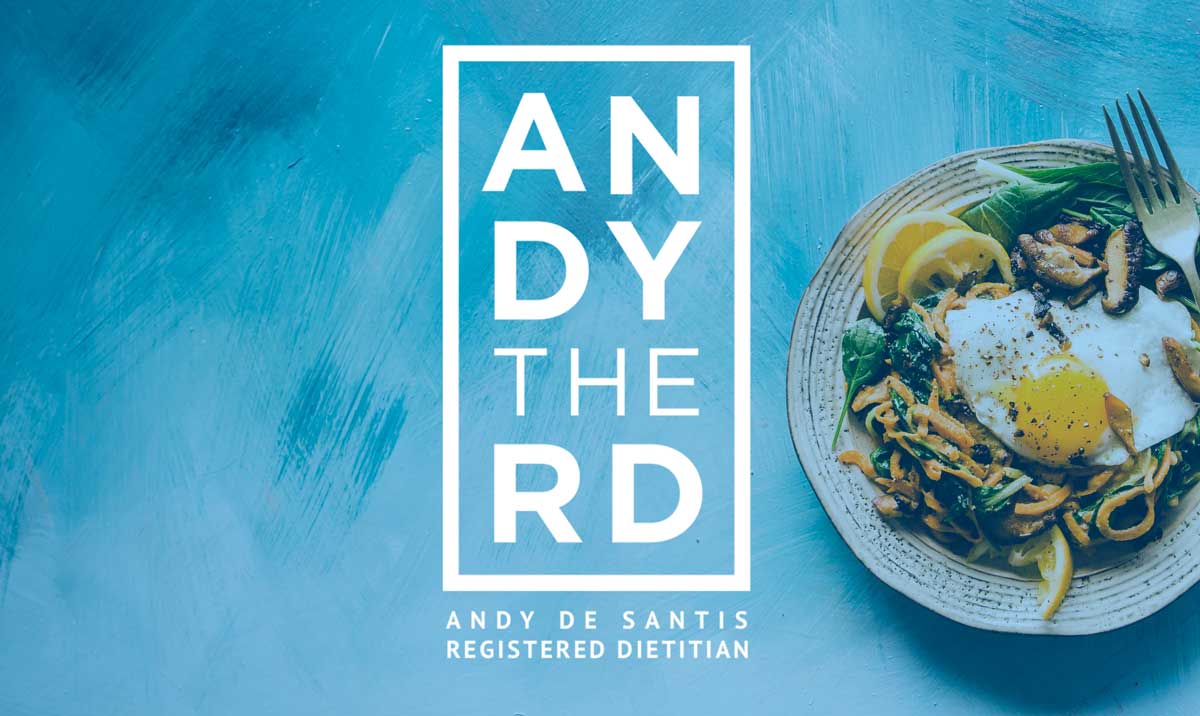A significant number of adults in Canada consume too much sodium.
How significant you ask?
Recent data suggests that close to 75% of men and 50% of women consume sodium beyond recommended levels.
The problem is admittedly much more significant in men with more than 90% of males between the ages of 14-30 are consuming excess levels of sodium.
This is quite staggering, particularly when you consider the fact that sodium is a primary driver of high blood pressure and high blood pressure medication is the most frequently reported to be used in Canada.
High blood pressure, of course, contributes negatively to a number of aspects of human health including both cardiovascular health and sexual health, where it is associated with an increased risk of erectile and sexual dsyfunction.
The Salty, Unsexy Truth
Nearly half of all men with hypertension ALSO have erectile dysfunction, and its not just men over 40 either.
According to a 2013 study out of the journal of sexual medicine, one in four patients seeking medical assistance for erectile dysfunction was under 40 years old.
It’s not just men either, Female sexual dysfunction is more common in women with hypertension than it is in women with normal blood pressure.

Have I got your attention yet?
To quote a 2013 British Medical Journal paper:
“The totality of evidence suggests that most people will likely benefit from reducing sodium intake”
But where is all this sodium coming from?
Let’s find out.
The Top 6 Sources Of Dietary Sodium
Bakery Products
Such as bread, muffins, cookies, desserts, crackers & granola bars.
For those trying to reduce their sodium intake reading nutrition labels for products in these categories and choosing lower sodium options will certainly help.
Mixed Dishes
Such as pizza, lasagna and pre-prepared salads as well as frozen products like appetizers, entrees and potatos.
Cooking these types of meals at home, where you can control the sodium content, in addition to label reading/comparison where possible, is your best strategy with these items.
Other Restaurant Dishes
Including burgers, omelets and sandwiches which could be made at home but are purchased out at likely a much higher sodium value.
Processed/Deli Meats
Processed meats such as ham, salami, sausages and hot dogs are really not great for human health so omitting them works on multiple levels – as always with some of these other products you have the ability to either make them from home or read labels to compare sodium content and choose the lower options.
Cheese
When purchasing pre-packaged cheese products label reading could help you to determine which cheeses are lowest – the content may vary significantly across cheese types with cottage cheese perhaps the most likely to be the lowest sodium variety.
Soups/Sauces
And other products that are canned/bottles like condiments, dressings etc. Again, your best defense is to compare product nutrition labels and choose the lowest sodium versions, to look for low sodium language on the product itself (ie; low sodium ketchup), or to make low-sodium alternatives at home instead.
Is Your Life Too Salty? I Can Help
With a little bit more thoughtfulness and strategizing around your food preparation and weekly strategizing, you will have massive potential to drive down your sodium intake and improve your health as a result.
High blood pressure is among the most common reasons for a medical visit and pharmaceutical prescription in North America, but you do not need to be among those statistics.
I can help guide you down a better path with customized and sustainable nutrition strategies that fit your life and schedule while getting you more involved in the food purchasing and preparation process.
You can do it!
Want to learn more about working together?
I’m an email away.
Hope today’s post helped.
Until next time,
Andy De Santis RD MPH
A Sneak Peek At My Strategy
If sodium is The Joker, potassium is Batman.
Under consumed by the vast majority of people, getting more dietary potassium in my clients lives is a cornerstone of my nutrition strategizing.
Want to learn which foods have the most potassium?



